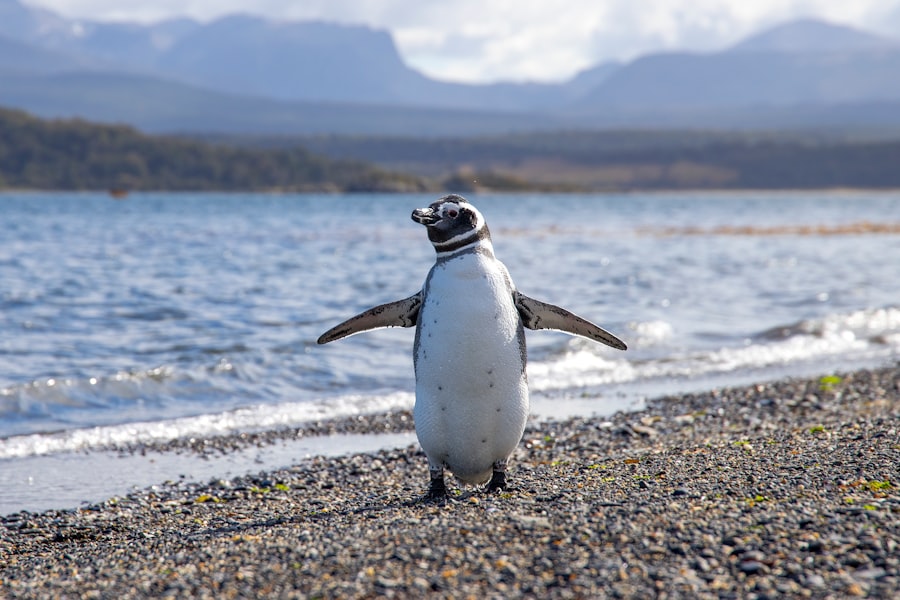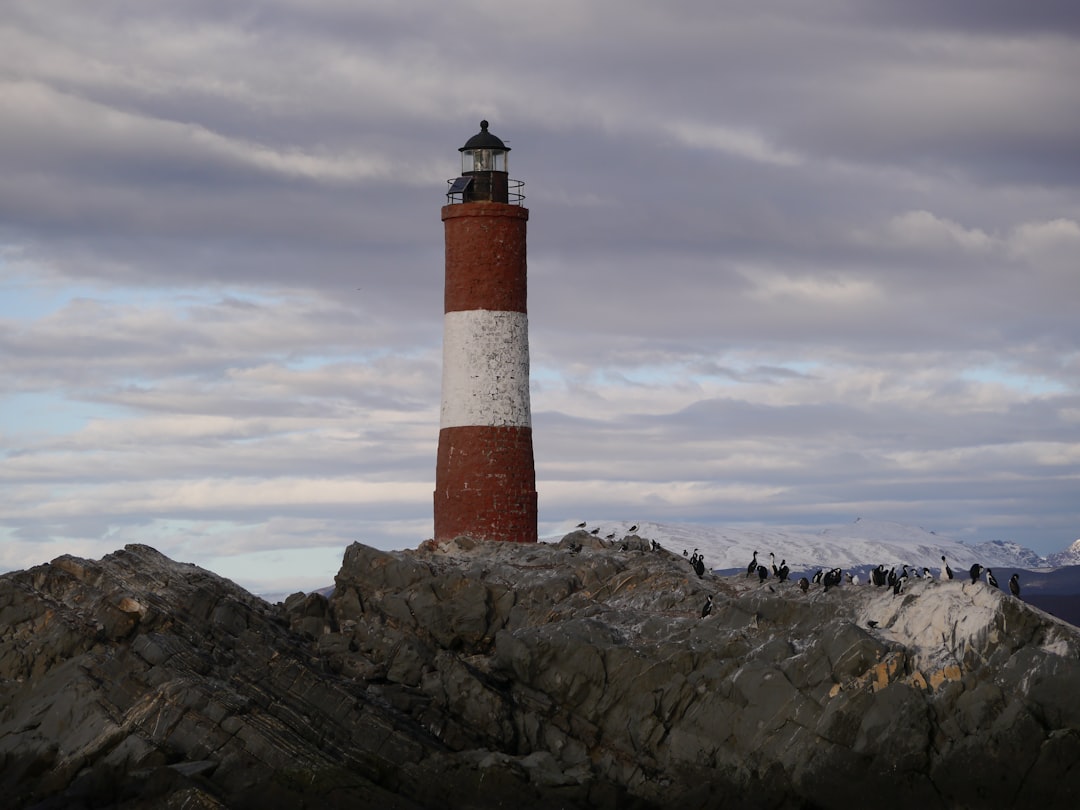Navigating the Beagle Channel and the Drake Passage presents a unique opportunity for adventurers and maritime enthusiasts alike. These two waterways, located at the southern tip of South America, serve as critical conduits between the Atlantic and Pacific Oceans. The Beagle Channel, a narrow strait, is flanked by the rugged landscapes of Tierra del Fuego, while the Drake Passage, known for its tumultuous waters, connects the southernmost point of South America to Antarctica.
Together, they form a vital part of the maritime routes that have been traversed by explorers, researchers, and tourists seeking to experience the breathtaking beauty and rich biodiversity of this remote region. The significance of these waterways extends beyond their geographical features; they are steeped in history and cultural narratives that have shaped human interaction with this part of the world. As travelers embark on their journeys through these channels, they not only navigate physical landscapes but also engage with stories of exploration, survival, and the enduring connection between humanity and nature.
Understanding the intricacies of these waterways is essential for anyone looking to traverse them, whether for leisure or research purposes.
Key Takeaways
- The Beagle Channel and Drake Passage are important waterways for navigating between the Atlantic and Pacific Oceans.
- The Beagle Channel is a narrow strait in the Tierra del Fuego archipelago, known for its stunning scenery and diverse wildlife.
- The Drake Passage is a notoriously rough and unpredictable stretch of water between South America and Antarctica, with strong winds and high waves.
- Travelers should be prepared for extreme weather conditions, including strong winds, heavy precipitation, and rapidly changing temperatures.
- Both the Beagle Channel and Drake Passage offer unique opportunities to observe a wide variety of marine and bird species in their natural habitats.
Geography and Characteristics of the Beagle Channel
The Beagle Channel is a navigable sea route that stretches approximately 240 kilometers (150 miles) from the city of Ushuaia in Argentina to the Pacific Ocean. It is flanked by several islands, including Navarino Island to the south and Grande Island to the north. The channel’s narrowest point is just 3.5 kilometers (2.2 miles) wide, making it a challenging yet fascinating passage for vessels of all sizes.
The surrounding landscape is characterized by steep mountains, lush forests, and a myriad of wildlife that thrives in this unique environment. One of the most striking features of the Beagle Channel is its intricate network of islands and waterways. The channel is dotted with numerous islets and rocks, creating a complex navigational challenge for mariners.
The waters are often calm compared to those of the Drake Passage, making it a preferred route for smaller vessels and pleasure boats. The channel’s rich marine life includes sea lions, penguins, and various species of seabirds, which can often be spotted by those navigating its waters. The stunning scenery, combined with its diverse ecosystems, makes the Beagle Channel a popular destination for eco-tourism and wildlife observation.
Geography and Characteristics of the Drake Passage

In stark contrast to the Beagle Channel, the Drake Passage is renowned for its rough seas and unpredictable weather patterns. This body of water spans approximately 800 kilometers (500 miles) between Cape Horn in South America and Antarctica. It is often considered one of the most challenging maritime routes in the world due to its strong currents and frequent storms.
The passage serves as a vital link for vessels traveling to and from Antarctica, making it an essential route for scientific research expeditions and tourism alike. The geography of the Drake Passage is defined by its deep waters and steep underwater topography. The continental shelf drops off sharply, leading to depths that can exceed 4,000 meters (13,000 feet).
This dramatic change in depth contributes to the turbulent conditions that characterize the passage. Sailors must be well-prepared for sudden changes in weather and sea state, as conditions can shift rapidly from calm to chaotic. Despite its challenges, the Drake Passage offers breathtaking views of icebergs, glaciers, and the rugged coastline of Antarctica, making it a sought-after experience for those willing to brave its waters.
Weather and Climate Considerations
| Metrics | Data |
|---|---|
| Temperature | 25°C |
| Humidity | 60% |
| Wind Speed | 10 km/h |
| Precipitation | 5 mm |
Weather conditions in both the Beagle Channel and Drake Passage can vary significantly throughout the year, influencing navigation and travel plans.
Summers (December to February) are generally cool, with average temperatures ranging from 10°C to 15°C (50°F to 59°F).
Winters (June to August) can be quite cold, with temperatures often dropping below freezing. Travelers should be prepared for rain and wind at any time of year, as weather patterns can change rapidly. In contrast, the Drake Passage is notorious for its severe weather conditions.
The passage is subject to strong winds and large swells due to its exposure to the Southern Ocean. Storms can arise suddenly, creating hazardous conditions for vessels. The best time to navigate this passage is during the austral summer months when weather conditions are generally more favorable.
However, even during this period, travelers should remain vigilant and prepared for unexpected changes in weather. Understanding these climatic factors is crucial for ensuring a safe and enjoyable journey through these challenging waters.
Wildlife and Natural Attractions
Both the Beagle Channel and Drake Passage are teeming with wildlife, offering unique opportunities for observation and appreciation of nature’s wonders. The Beagle Channel is home to a diverse array of marine life, including sea lions, dolphins, and various species of fish. Birdwatchers will delight in spotting seabirds such as albatrosses, petrels, and cormorants that inhabit the region.
The channel’s islands provide nesting grounds for penguins, making it a prime location for wildlife enthusiasts seeking close encounters with these charming creatures. The Drake Passage also boasts remarkable biodiversity, particularly during the summer months when migratory species flock to its waters. Whales are a common sight in this region, with species such as humpback whales, orcas, and blue whales often spotted during their migration routes.
The passage’s nutrient-rich waters support an abundance of krill, attracting various seabirds and marine mammals. For those venturing into these waters, opportunities for wildlife photography and observation abound, creating unforgettable memories of encounters with some of nature’s most magnificent creatures.
Historical Significance and Exploration

The historical significance of the Beagle Channel and Drake Passage cannot be overstated. The Beagle Channel was named after HMS Beagle, the ship that carried Charles Darwin on his famous voyage in the 1830s. This journey played a pivotal role in shaping modern scientific thought regarding evolution and natural selection.
The channel has since become a symbol of exploration and discovery, attracting adventurers who seek to follow in Darwin’s footsteps. The Drake Passage has its own rich history as well. It was named after Sir Francis Drake, an English explorer who navigated these treacherous waters in the late 16th century during his circumnavigation of the globe.
The passage has long been a route for explorers seeking new lands and resources, as well as for whalers and sealers who exploited its rich marine life in centuries past. Today, it remains a vital route for scientific research expeditions heading to Antarctica, continuing its legacy as a gateway to exploration.
Navigational Challenges and Considerations
Navigating through the Beagle Channel and Drake Passage presents various challenges that mariners must consider carefully. In the Beagle Channel, while generally calmer than the Drake Passage, navigators must remain vigilant due to its narrow passages and numerous islands that can pose hazards to navigation. Accurate charts are essential for safe passage through this intricate waterway.
Additionally, local knowledge can be invaluable; understanding tidal currents and local weather patterns can make a significant difference in ensuring safe navigation. The Drake Passage poses even greater challenges due to its unpredictable weather conditions and strong currents. Mariners must be prepared for sudden storms that can create dangerous swells and waves.
It is crucial for vessels traversing this passage to be equipped with reliable navigation systems and safety equipment. Experienced crews familiar with these waters can help mitigate risks associated with navigating through this tumultuous region.
Transportation Options
Travelers looking to navigate the Beagle Channel or Drake Passage have several transportation options available to them. For those interested in exploring the Beagle Channel, small boats or ferries operate regularly from Ushuaia, providing access to various islands and wildlife viewing opportunities. These excursions often include guided tours that offer insights into the region’s natural history and cultural significance.
For those venturing into the Drake Passage, larger expedition vessels are typically used due to the challenging conditions encountered in these waters. Many cruise lines offer itineraries that include stops at various points along the Antarctic Peninsula while traversing the Drake Passage. These cruises provide travelers with comfortable accommodations while allowing them to experience the breathtaking landscapes and wildlife unique to this region.
Regardless of the chosen mode of transportation, travelers should prioritize safety and choose reputable operators with experience navigating these challenging waters.
Safety Precautions and Emergency Preparedness
Safety should always be a top priority when navigating through the Beagle Channel or Drake Passage. Mariners must ensure that their vessels are well-equipped with safety gear such as life jackets, flares, first aid kits, and emergency communication devices. Regular safety drills should be conducted to familiarize crew members with emergency procedures in case of adverse weather or other unforeseen circumstances.
In addition to equipment preparedness, travelers should also stay informed about weather forecasts before embarking on their journeys. Understanding potential risks associated with navigating these waterways can help mitigate dangers associated with sudden storms or rough seas. It is advisable for travelers to have contingency plans in place should conditions become unfavorable during their journey.
Cultural and Indigenous Perspectives
The Beagle Channel and Drake Passage hold significant cultural importance for indigenous communities in the region. The Yaghan people have inhabited areas around the Beagle Channel for thousands of years, relying on its resources for sustenance and cultural practices. Their deep connection to this land is reflected in their traditions, stories, and understanding of nature.
As modern exploration continues in these waters, it is essential to recognize and respect indigenous perspectives on land use and conservation efforts. Engaging with local communities can provide valuable insights into sustainable practices that honor both cultural heritage and environmental stewardship. By fostering dialogue between explorers and indigenous peoples, travelers can gain a deeper appreciation for the rich tapestry of history that defines this remarkable region.
Choosing the Best Route for Your Journey
Choosing between navigating the Beagle Channel or embarking on an adventure through the Drake Passage ultimately depends on individual preferences and objectives. For those seeking calmer waters filled with stunning scenery and abundant wildlife viewing opportunities, the Beagle Channel offers an ideal setting for exploration. Conversely, those looking for an exhilarating experience filled with challenges may find themselves drawn to the unpredictable nature of the Drake Passage.
Regardless of which route one chooses, both waterways promise unforgettable experiences steeped in natural beauty and historical significance. With careful planning, respect for local cultures, and an understanding of navigational challenges ahead, travelers can embark on journeys that not only fulfill their adventurous spirits but also deepen their connection to this extraordinary part of our planet.
The Beagle Channel and Drake Passage are two significant waterways in the southern tip of South America, each offering unique navigational challenges and breathtaking scenery. While the Beagle Channel is known for its calm waters and stunning views of the surrounding mountains and glaciers, the Drake Passage is infamous for its rough seas and unpredictable weather, making it a thrilling route for adventurous sailors. For those interested in exploring more about these fascinating maritime routes and their geographical significance, a related article can be found on MyGeoQuest. You can read more about these waterways by visiting this link.
WATCH NOW! Drake Passage: Earth’s Deadliest Waters Revealed
FAQs
What is the Beagle Channel?
The Beagle Channel is a natural waterway in the archipelago of Tierra del Fuego, located in the extreme southern part of South America. It separates the main island of Tierra del Fuego from various smaller islands.
What is the Drake Passage?
The Drake Passage is the body of water between the southern tip of South America at Cape Horn and the South Shetland Islands of Antarctica. It connects the southwestern part of the Atlantic Ocean with the southeastern part of the Pacific Ocean.
How do the Beagle Channel and Drake Passage differ?
The Beagle Channel is a relatively sheltered and narrow waterway, while the Drake Passage is a much wider and more open expanse of water. The Beagle Channel is also located further north than the Drake Passage.
Which one is more suitable for navigation?
The Beagle Channel is generally considered more suitable for navigation, as it is more sheltered and less prone to extreme weather conditions compared to the Drake Passage. The Drake Passage is known for its rough seas and strong winds, making it more challenging for navigation.
What are the main attractions of the Beagle Channel and Drake Passage?
The Beagle Channel is known for its stunning natural scenery, including glaciers, mountains, and diverse wildlife. The Drake Passage is famous for its rich marine life, including whales, seals, and seabirds, as well as its historical significance as a major route for Antarctic exploration.
Which one is more commonly used for tourism?
The Beagle Channel is more commonly used for tourism, with various cruises and tours offering visitors the opportunity to explore its natural beauty and wildlife. The Drake Passage is primarily known as a transit route for expeditions to Antarctica, rather than a destination for tourism in itself.
